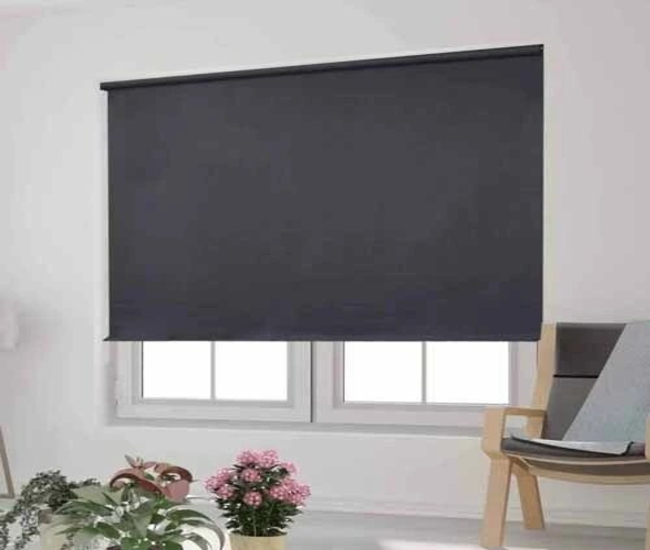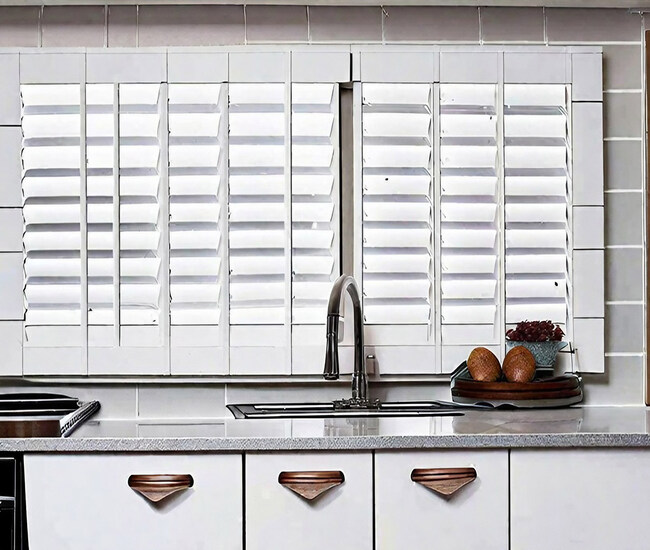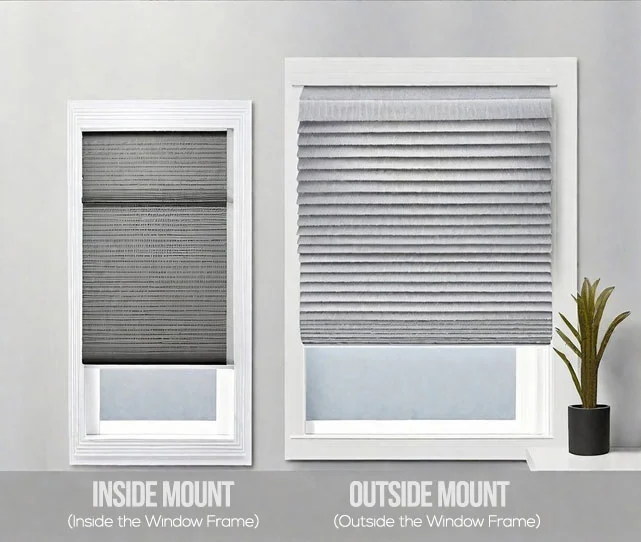Looking for the best blinds for temperature control year round? Here’s a curated collection of the best blinds to keep home cooler in summer and warmer in winter. From honeycomb or cellular shades and shutters to roller shades and thermal curtains, find the best window covering to maintain indoor temperature during colder and hotter months.
Insulating window blinds will help you to maintain comfortable interior temperature and lower your energy bills.
Picking the right insulating window treatments for temperature control is an essential step toward achieving a more comfortable, energy-efficient home. Doing so can help you save money while keeping your house cozy regardless of what season it is outside!
Here is a comprehensive guide about how to pick the best blinds for temperature control and money savings all year round.
The sun’s rays play a major role in how warm or cold our homes become throughout each season. Sunlight coming through windows with no protection increases indoor temperatures – leading to higher air conditioning bills during hot summer months. Conversely, inadequate insulation on windows can lead to uncomfortable drafts and increased heating costs in wintertime.
That’s why it’s so crucial to equip your windows with proper insulation. This can be achieved by choosing the right window treatments! This post explores which type of blinds, shades, shutters, draperies, and curtains are best at blocking light and heat while also keeping out chilly air when needed.
Scroll on to learn more about the best temperature control blinds and factors to consider to choose the right one for your home.
Best Insulating Window Blinds for Temperature Control
When it comes to temperature control, there are a variety of insulating blinds and other window treatments.
1. Double Pleated or Double Cell Insulating Cellular Shades

Cellular shades are highly thermally efficient blinds, as they can help block out light, while providing insulation against heat transfer from outside temperatures.
Pros
- Double-pleated honeycomb construction provides best temperature control and energy efficiency.
- Cellular shades can reduce unwanted solar heat gain through windows by up to 60%.
- Prevent heat from escaping, keeping your room warmer in winter.
- Prevent the sun’s harsh rays from heating up your room, keeping it cooler in summer.
Cons
- Difficulty in cleaning
- High maintenance cost
2. Thermal Curtains
Thermal curtains are great for blocking out the sun’s rays and keeping your home cool in the summer months.
Pros
- Insulate your windows and reduce drafts.
- Improve energy efficiency by reducing your energy waste.
- Trap air leaks around your windows.
- Lessen the amount of heat coming through the glass window when the sun shines through.
Cons
- Light can still filter.
- Some heat can still escape through them.
3. Blackout Roller Shades

Blackout roller shades offer an effective way to reduce glare without sacrificing natural sunlight in the room.
Pros
- Block out most of the direct sunlight.
- Significantly reduce heat transfer through the window.
- Superior light blocking and privacy.
- Better sleep quality.
Cons
- There may be gaps between the edge of the roller fabric and the window recess.
- May produce noise by flapping if the window is left open.
4. Plantation Shutters

Plantation shutters provide excellent insulation benefits by helping keep hot air out and cold air in during the cooling season.
Pros
- Regulate indoor temperature by providing an extra layer of insulation.
- Minimize heat transfer from outside.
- Significant cost saving on energy bills over time.
Cons
- Long production and delivery times.
- High upfront costs.
5. Blackout Curtains
Finally, blackout curtains will help insulate windows from both the cold and heat as well as add a stylish touch to any room.
Pros
- Keep light and heat out during summer.
- Trap heat in during the winter.
- Prevent up to 25% thermal energy loss.
- Block out 90% of all light.
Cons
- Can make your room too dark.
- Can be expensive and difficult to install.
With the best temperature control blinds, your home can achieve a higher level of comfort and energy savings. From lowering heating bills to creating an optimum living atmosphere, these types of window coverings are ideal for any homeowner looking to elevate their property’s efficiency and coziness.
Factors to Consider When Choosing Best Blinds for Temperature Control
Choosing the right window treatments for insulation and temperature control can be a challenging task. It is important to consider several factors before making your final decision, as they will have an impact on both the cost and efficiency of keeping your home cool.
Insulation Potential
The first factor to take into account is the insulation potential of the given window treatment. Some materials are more effective at blocking heat transfer than others.
Size of Window Frame
The size of the window frame matters — it will ensure a perfect fit. You need to make sure that whatever type of blind you choose covers enough space to provide the desired effect.
Light-Blocking Capability

When considering how to maintain your desired level of interior warmth, the light-blocking capabilities of the temperature control blinds are a key factor.
Fabric Choice

Aim for fabrics that block out more heat and brightness while ensuring the style won’t detract from the beauty of your home.
Mounting Option

Considering the mounting option is very important when choosing the right blinds for temperature control. There are two popular mount options, i.e., inside mount and outside mount. In the case you choose an inside mount, you will need to make sure that there is enough depth in your window frame.
Safety for Children and Pets

Safety for children and pets is one of the most important factors to consider when buying temperature control blinds. For this purpose, you can go for a cordless or motorized option. With their cords removed, they will not pose a choking hazard for your children and pets.
Affordability

Obviously, your budgetary constraints might limit your choice of temperature control blinds. Thermally efficient cellular shades are usually a cost effective solution.
Analyzing all elements carefully will allow you to pick blinds that are perfectly suited for temperature control and seamless transitions between indoor and outdoor climate conditions.
Benefits of Insulating Window Treatments for Temperature Control
Installing insulating window treatments is an effective way to get the most out of your home’s energy efficiency.
A Wide Range of Custom Options
By using various materials, colors, and styles, you can reduce glare from sunlight, block UV rays to protect furniture and carpets, and provide thermal insulation that helps regulate temperature while improving comfort.
Noise Reduction

In addition, window treatments also help keep noise outside where it belongs.
Maximum Heat Control and Blackout Functionality
Not only do they offer maximum protection against heat transfer through windows but many options are designed with additional features such as blackout lining for complete darkness when needed.
Aesthetic Value Plus Affordability
Furthermore, these treatments not only add aesthetic value to any space but are available in a range of prices making them affordable and budget-friendly.
With all the benefits combined, there’s no reason why you shouldn’t install some form of insulating window treatment if you want to enjoy increased energy savings as well as improved comfort throughout the year!
For those looking to save on their monthly energy bill or just improve their overall level of comfort during the hot summer months, installing quality window treatments is a great choice.
Where to Buy Best Blinds for Temperature Control

Affordableblinds.com is one of the best online platforms to buy any type of temperature control blinds. Here you can avail lots of advantages, including affordable prices, huge discounts of up to 70%, and lots of free offers, such as free samples, free shipping, worry-free fit guarantee, and a free lifetime warranty.
Conclusion
You need to consider multiple factors when choosing the right blinds for temperature control. Not only will they help keep temperatures comfortable all year round, but they’ll also save you money on electricity bills! When making a choice between insulating blinds and shades or curtains and shutters, pay attention to factors like the size of the window frame, and room orientation in relation to sunlight exposure. Each type of temperature control blind offers its own level of insulation which must be considered when finding the most suitable solution for maximum comfort at home.
FAQs
What type of blinds are best for keeping out heat?
Honeycomb or cellular blinds are best for keeping heat out in summer and retaining heat in winter. They trap a layer of air in their cells that helps insulate, while still allowing filtered light in.
Do blinds help with temperature control?
Yes, they do! Window blinds with thick material or honeycomb cellular construction are effective at reducing summer heat gain and reducing glare, while providing good daylight and privacy indoors.
Do blackout blinds make a room hotter?
Yes, blackout blinds for windows make the room hotter in the summer because they absorb heat rather than dispersing it as lighter color (heat-reflecting) blinds would. This in turn may raise your room’s temperature or stop it from dropping as fast as it otherwise would, thus increasing your home’s cooling costs.
What are the best blinds for cold weather?
Honeycomb blinds, vertical blinds, and top down bottom up cellular shades are the best blinds for cold weather. The cells in their honeycomb fabric trap air between them, creating a layer of insulation to keep your home warmer in cold weather and cooler in summer.
What blinds are best for thermal efficiency?
Double pleated honeycomb or cellular blinds are best for thermal efficiency, minimizing heat loss through your windows in winter. They are nearly twice as effective in retaining heat as their single cellular counterparts.
What are the best curtains or blinds to keep heat out?
We highly recommend thermal insulated blackout curtains and blinds. They are ideal for summer heat, as they cut out a huge amount of light coming into the room.
Do blinds affect room temperature?
Yes, they do! Blinds provide an additional layer of insulation to reduce heat loss from inside the room in winter. Similarly, light-colored or reflective blinds can prevent excess solar heat from entering your room in summer, maintaining a more comfortable indoor temperature.
Was this helpful?
Send feedback. Or contact customer support to get answers to your queries about the benefits of cellular shades. Use 24/7 live chat or give us a ring at (800) 863-6109 now. You are also encouraged to order a free sample of cellular shades.
